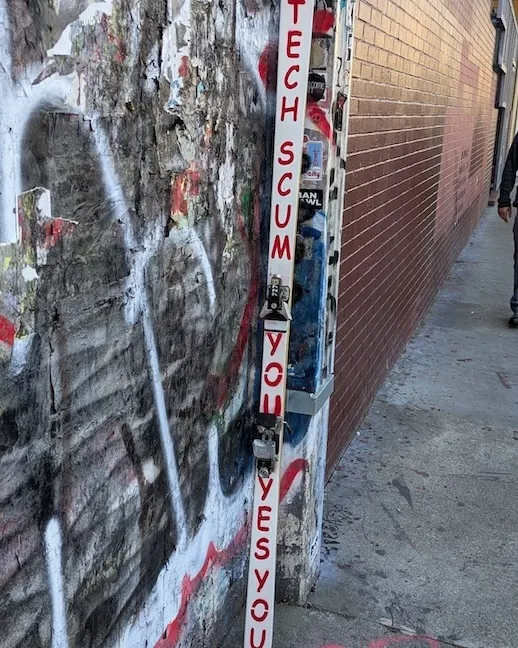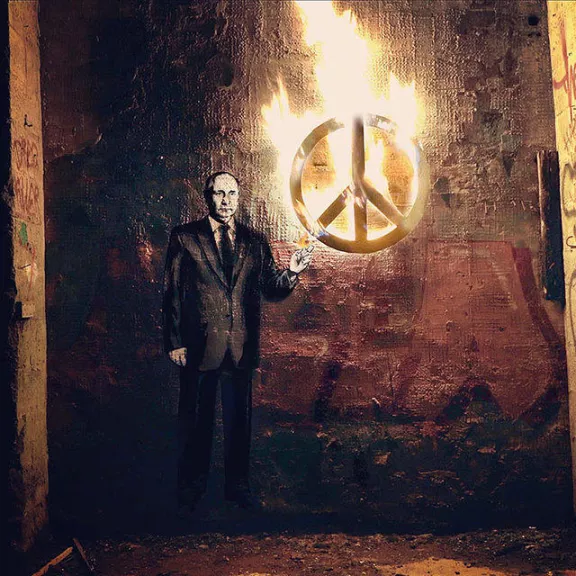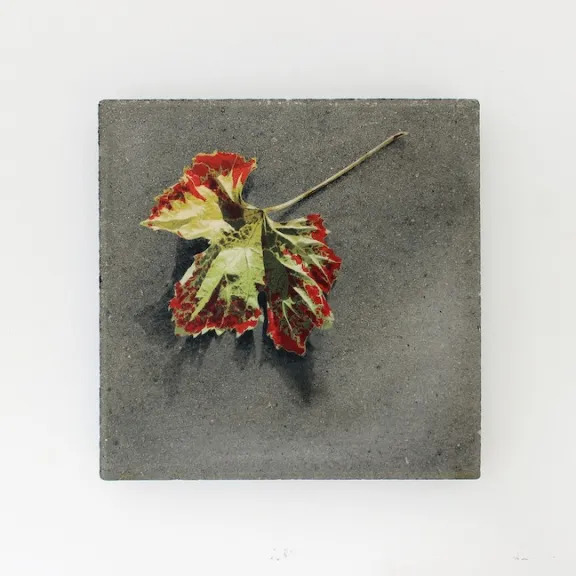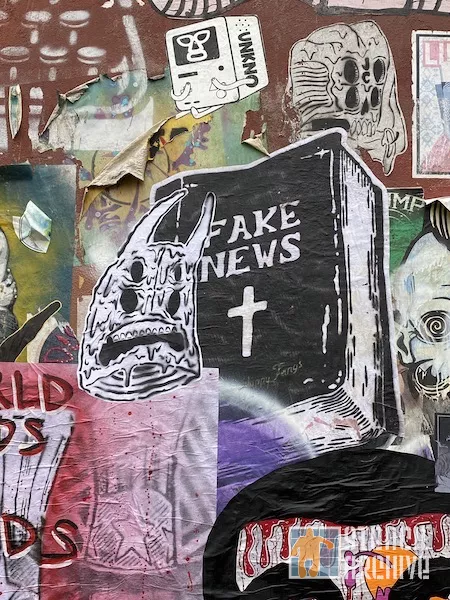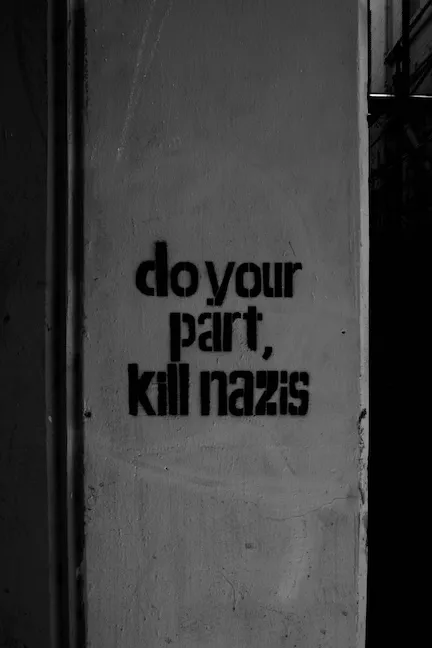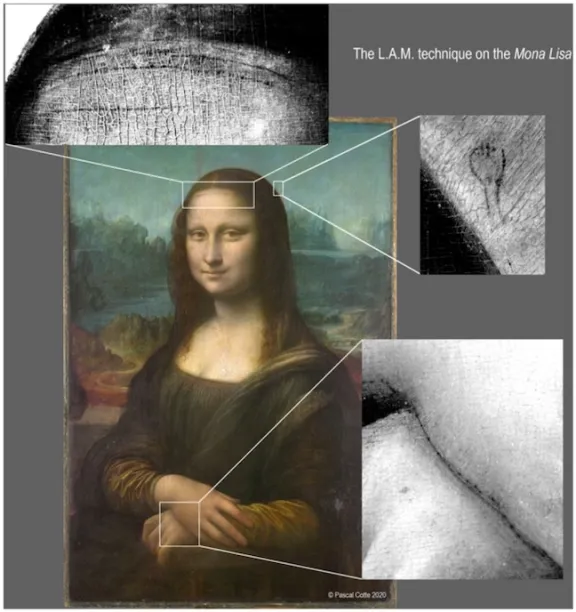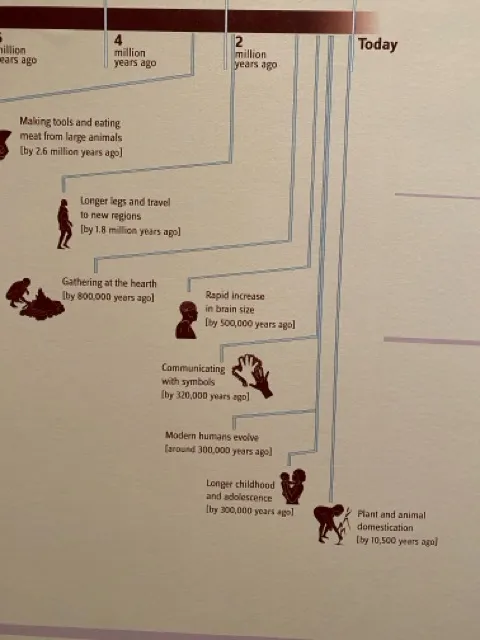Since 2002 (updated often), your old-school website for all things stencils. Photo, video, links, and exhibit info submissions always welcome. Enjoy and stay curious.
On the walls! 8/21 to 9/10, SF, CA :: CELLspace PopUp :: IG :: Invite
Donate any amount to support this DIY site.
Buy Stencil Nation or take a tour
Our best photos on Instagram and flickr.
More new pics today
Spinning: KGLW, XTC
Thanks: Amanda and Chris
Just a small update for now, before heading out to IRL with some rad folks:
Just sayin...
Newest from the Best
Familiar names snapping photos and/or making stencils works this time around.
- Argentina (thanks, Amanda)
- Austria (BeneRegoef)
- NYC (Brooklyn Street Art / Jaime Rojo)
- Stefan Winterle's new works
- >NEW< Supercreate stencils a utility box in the Mission
Sunday Musk Slug-fest
While uploading fresh stencil photos today, we realized that a stack of anti-Musk pics recently came to Stencil Archive from several different ways:
- Upland, CA Tesla dealership protest
- Indecline gets in on the salute dis in Los Angeles
- Yes, Musk is a slug in our garden in Maryland
- Chris C. sent a link with this double dose of reality from Oaxaca, MX.
A Field Guide to Wheatpasting from CrimethInc
A Field Guide to Wheatpasting
Everything You Need to Know to Blanket the World in Posters
2017-07-18
(Original Link with pdf poster, diagrams, images)
Like graffiti, wheatpasting is a direct action technique for communicating with your neighbors and redecorating your environment. Because it’s easy to mass-produce posters, wheatpasting enables you to deploy a nuanced, complex message at a large number of locations with minimal effort and risk. Repetition makes your message familiar to everyone and increases the chances that others will think it over. If you’re looking for posters to paste up, we offer a wide selection of poster designs to print out or order in bulk.
This is excerpted from our book, Recipes for Disaster, which details a wealth of related tactics.
Neanderthal Hand Stencils Dated in Spain
Neanderthals created hand stencil rock art over 66,000 years ago, U-series dating reveals
Dario Radley
(Link)
A discovery in Maltravieso Cave, located in Extremadura, Spain, has fundamentally challenged long-held beliefs about the origins of human artistic expression.
Neanderthals created hand stencil rock art over 66,000 years ago, U-series dating reveals
Researchers have determined that hand stencils in the cave date back over 66,000 years, suggesting that Neanderthals, rather than modern humans, were the world’s first artists. This revelation highlights the advanced cognitive and cultural capabilities of Neanderthals.
The research, conducted by an international team of archaeologists from the University of Southampton and collaborating institutions in Great Britain and Spain, utilized uranium-thorium (U-series) dating to establish the age of the artwork. Their findings, published in the Journal of Archaeological Science: Reports, confirm that these hand stencils are among the earliest known examples of intentionally created visual art.
Stencils floating amongst the stars and flames
As cybertrucks burn, stencils run in the streets.
Classic Spolvero (stencil pouncing or dusting)
The technique of dusting: how the greats of the Renaissance executed paintings
by Redazione , published on 30/09/2020
From Finestre sull' Arte
One of these techniques was to cast with an awl: the tip of the tool was passed through the paper to leave a groove on the surface. For geometrically patterned decorations, the pierced mold technique could then be used: the design was traced on a sort of stencil through which the contours of the figures could be etched on the surface.
The spread of paper, beginning in the 1360s and 1370s, was one of the most important innovations in art history: until then, the preparatory drawing for a pictorial work was traced directly on the support. This was the way it was done in Byzantine times, when the drawing was traced on the plaster, either freehand or with the help of tools (it was necessary to have gained enough experience not to make mistakes, since the correction of any errors was definitely complicated), and this was also the way it was done in medieval painting before paper became a common material. Several analyses conducted on painted crosses, for example, have found this type of technique: take as an example the Rosano cross, a 12th-century work (probably painted around 1120), which has recently undergone reflectographic investigations aimed at determining what lies beneath the painting.
Sunny Saturday Stencils
No rain in sight today here in San Francisco. Quick update before we go out and soak up the vitamin D. Thanks to the usual social media street art streams for most of these.
Flipping Bill Evans LP to B side right now..... OK, back to it.

